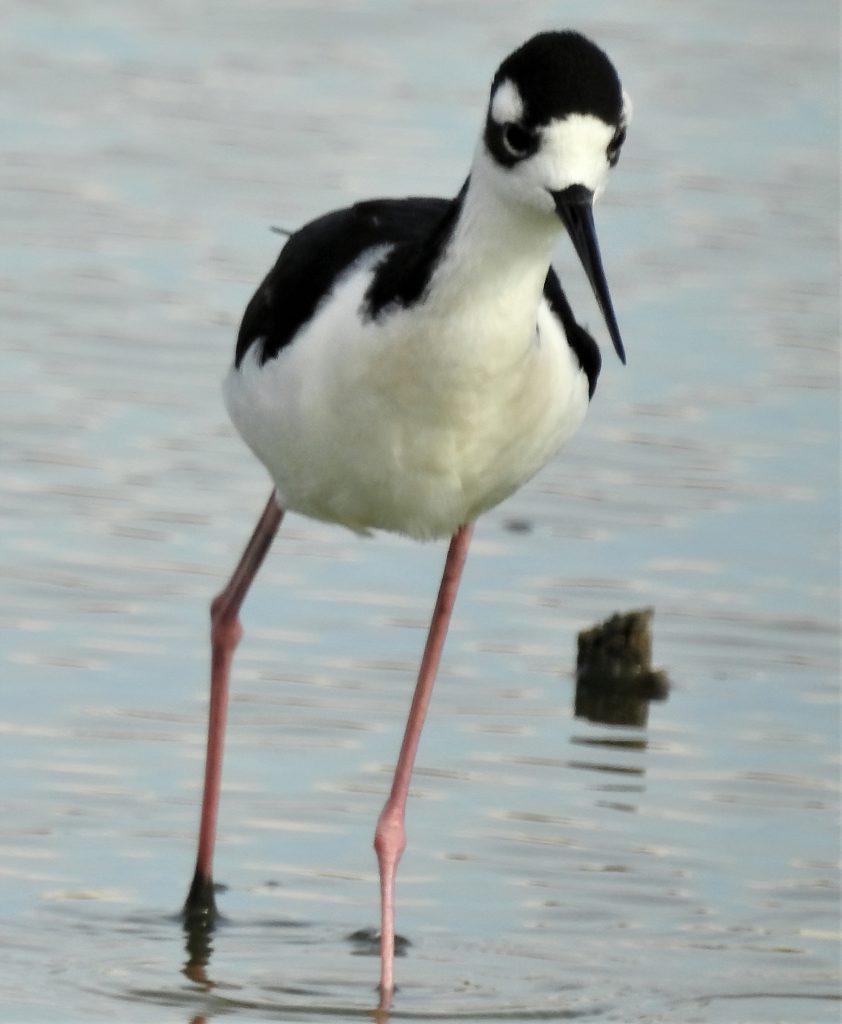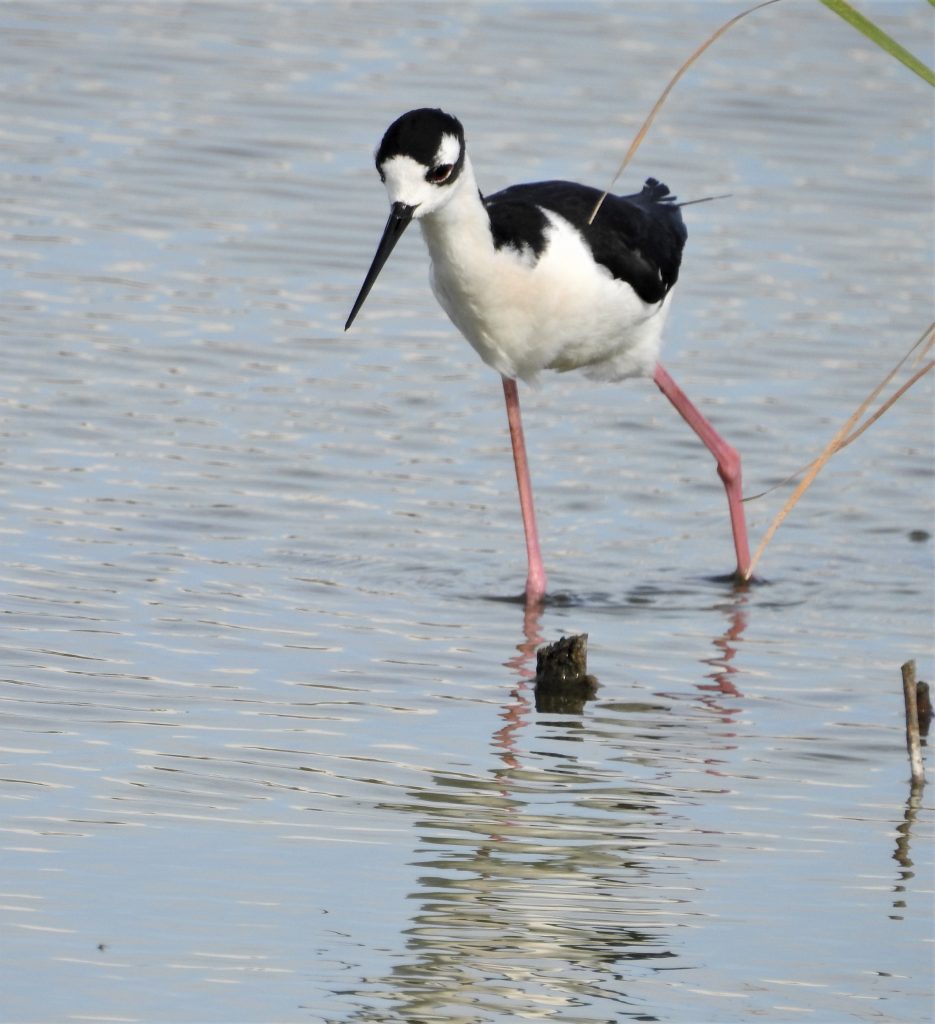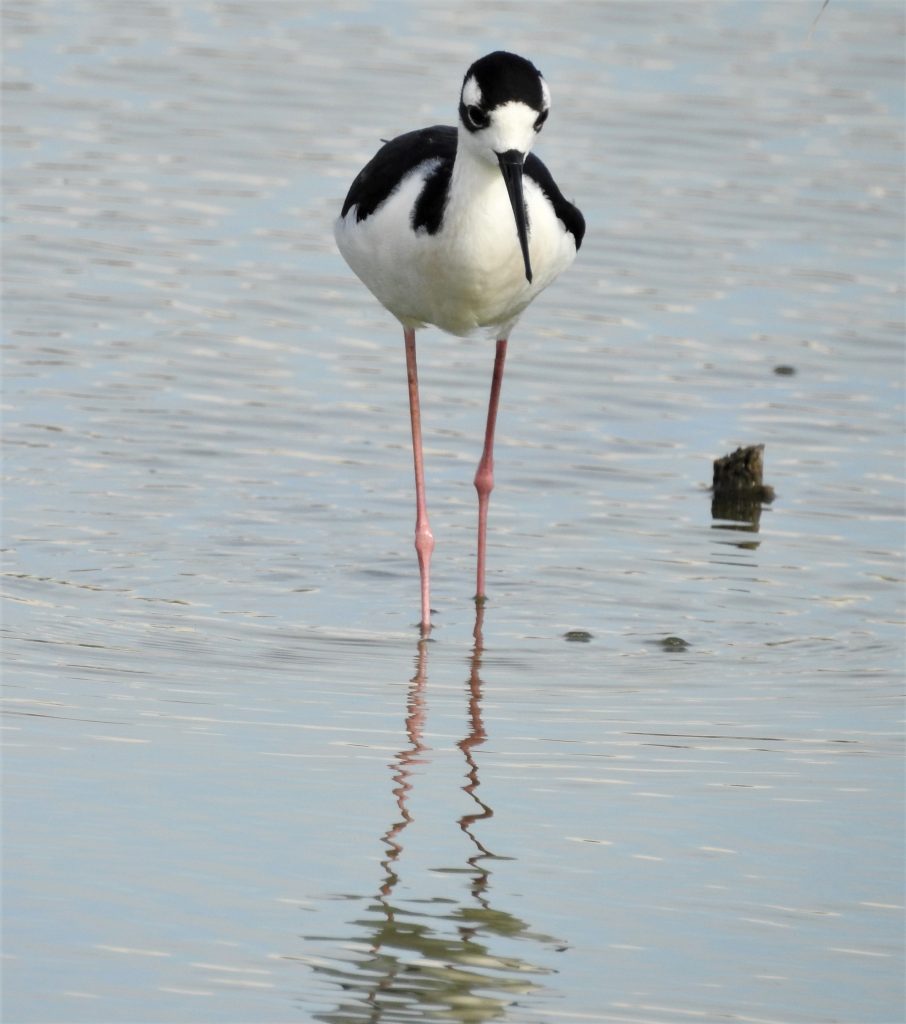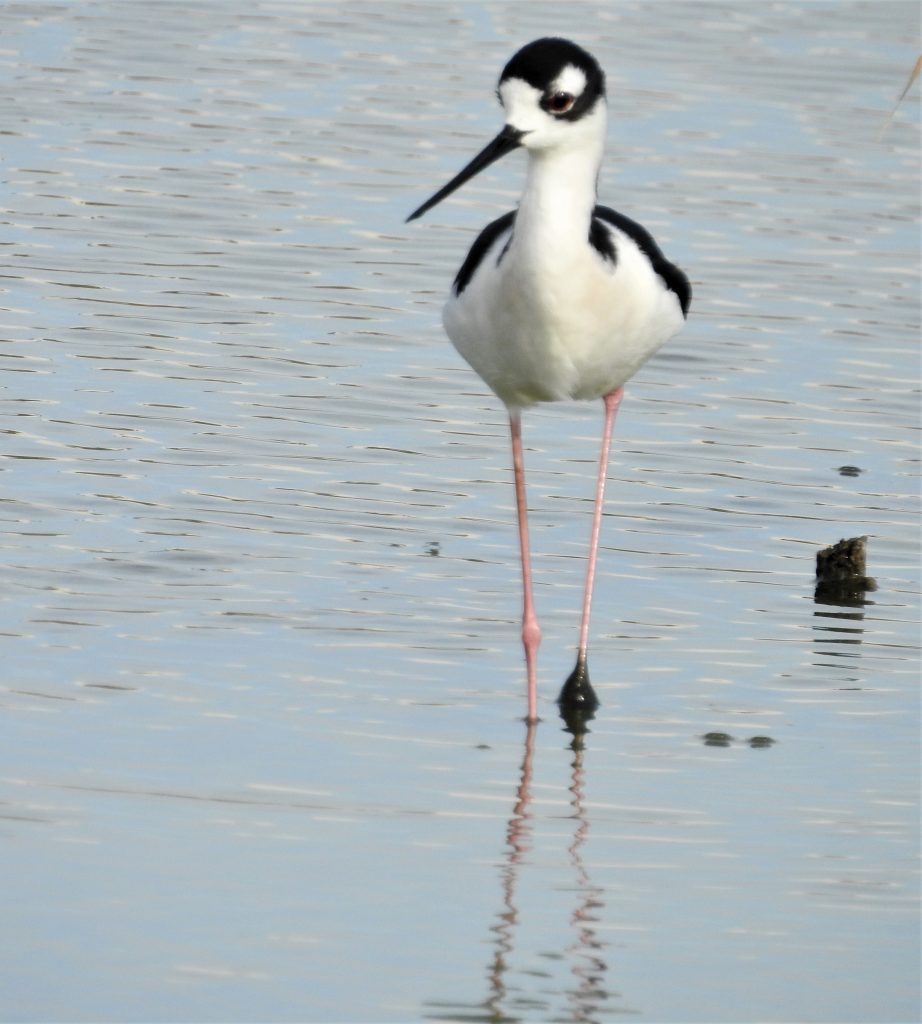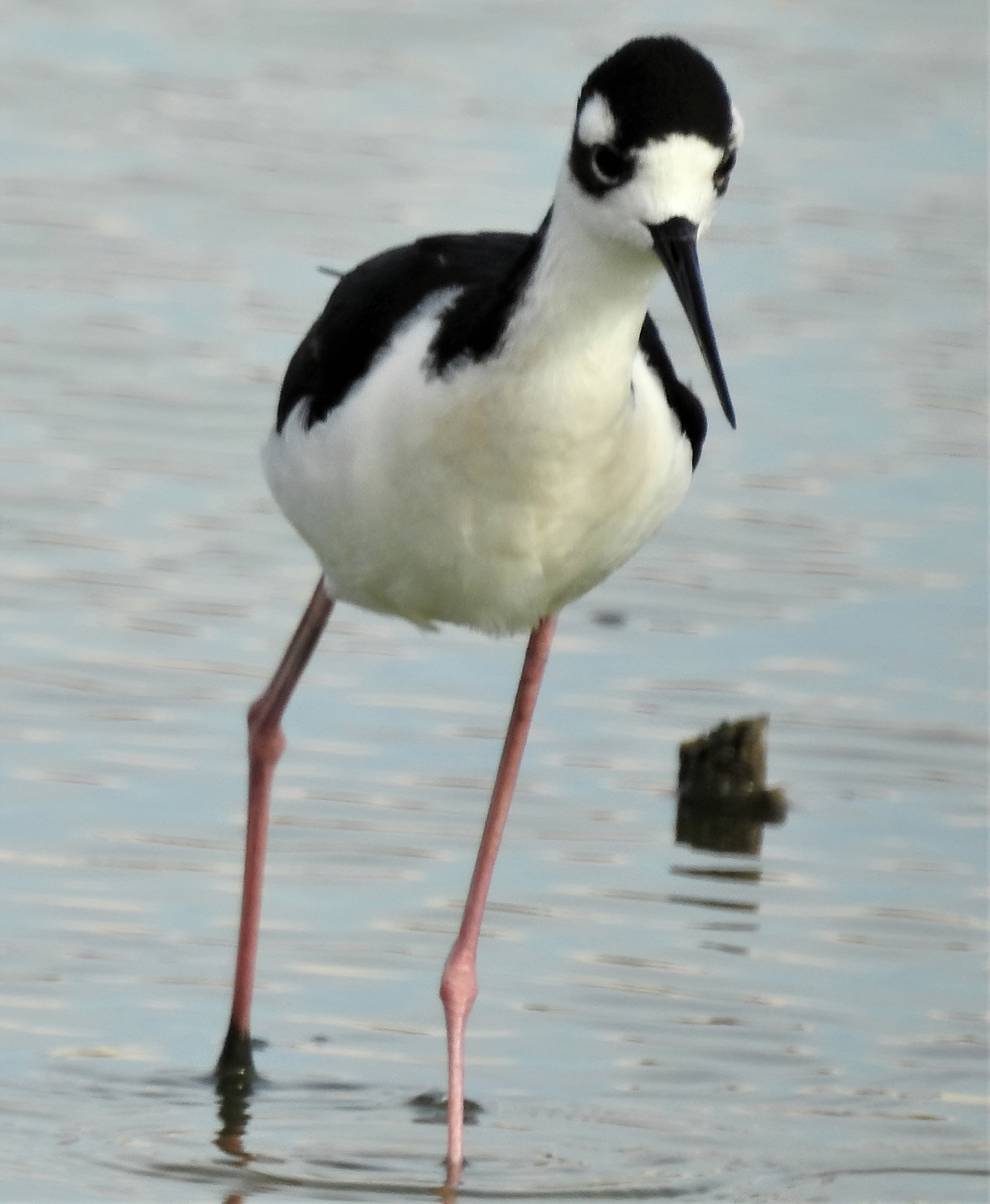
A cartoon animal springs to mind when I watch this round-headed, needle-billed, tuxedoed bird that, walking on pink stilts, rises above its fellow shorebirds probing the mud for edible treats.
This aptly named bird, the black-necked stilt, forages in and around Texas waterways—both along the coast and inland— from shorelines and mudflats to ponds, canals and resacas and, amid cactus and yucca, sudden washes that douse cracked, scorched earth.
This stilt’s glossy black back, with pointed wings and tail, contrasts keenly with its cotton-white chest and underparts as it strides on lanky, rose-colored legs—which, proportionate to its body, are longer than all but a flamingo’s legs. This added height enables it not only to wade into deep waters, but also to effectively scout for both predators and prey. With partially webbed feet, the stilt can swim, but evidently prefers not to. Females, which have browner backs, resemble males, and juveniles have brown backs with buffy edges.
Using its keen eyes, the black-necked stilt plucks prey from mud or water, sometimes sweeping its bill back and forth like a scythe. For some items, the stilt plunges headfirst into water, and it may snag insects from the air.
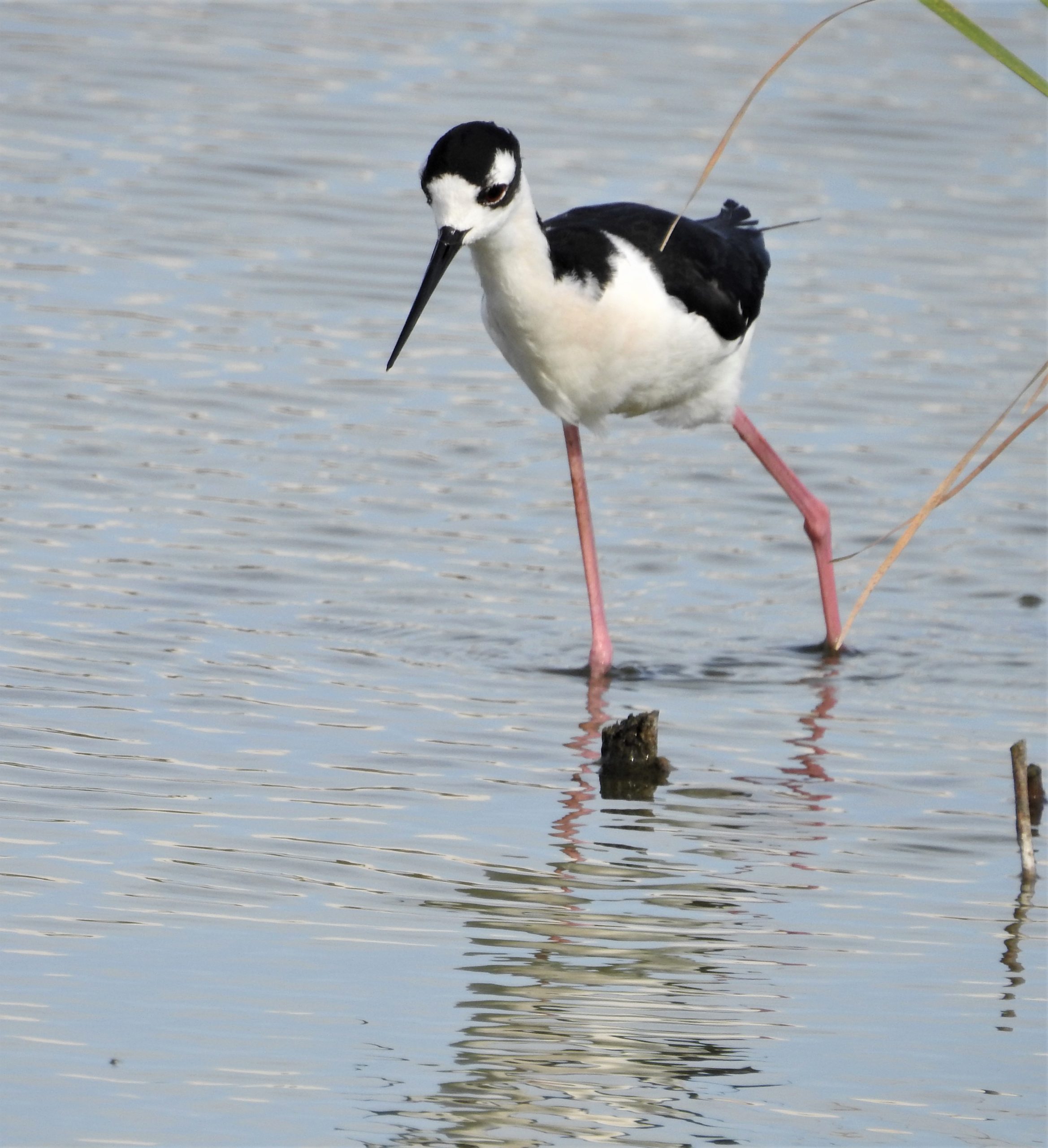
Key to their continued survival, black-necked stilts have a broad palate, eating brine shrimp, brine flies, insects and larvae, worms, crustaceans, mollusks, fish, frogs and floating aquatic seeds.
The black-necked stilt (Himantopus mexicanus)—sometimes dubbed “daddy longlegs” or “longshanks”— joins our winter visitor, the American avocet, in the family Recurvirostridae. This stilt’s genus derives from Greek “himantopous”, from “himas” or strap and “pous” for foot. Among other names, Spanish-speakers call it “cigüeñuela de cuello negro”, meaning “stilt with a black collar” or “viuda”, meaning “widow”.
These stilts range broadly throughout coastal and some western and mid-sections of the U.S., and wintering migrants supplement the Valley’s breeding populations. Locally, many nest on the freshwater pond—created by effluence from the treatment plant— between the South Padre Island Convention Center and the Birding, Nature Center & Alligator Sanctuary.
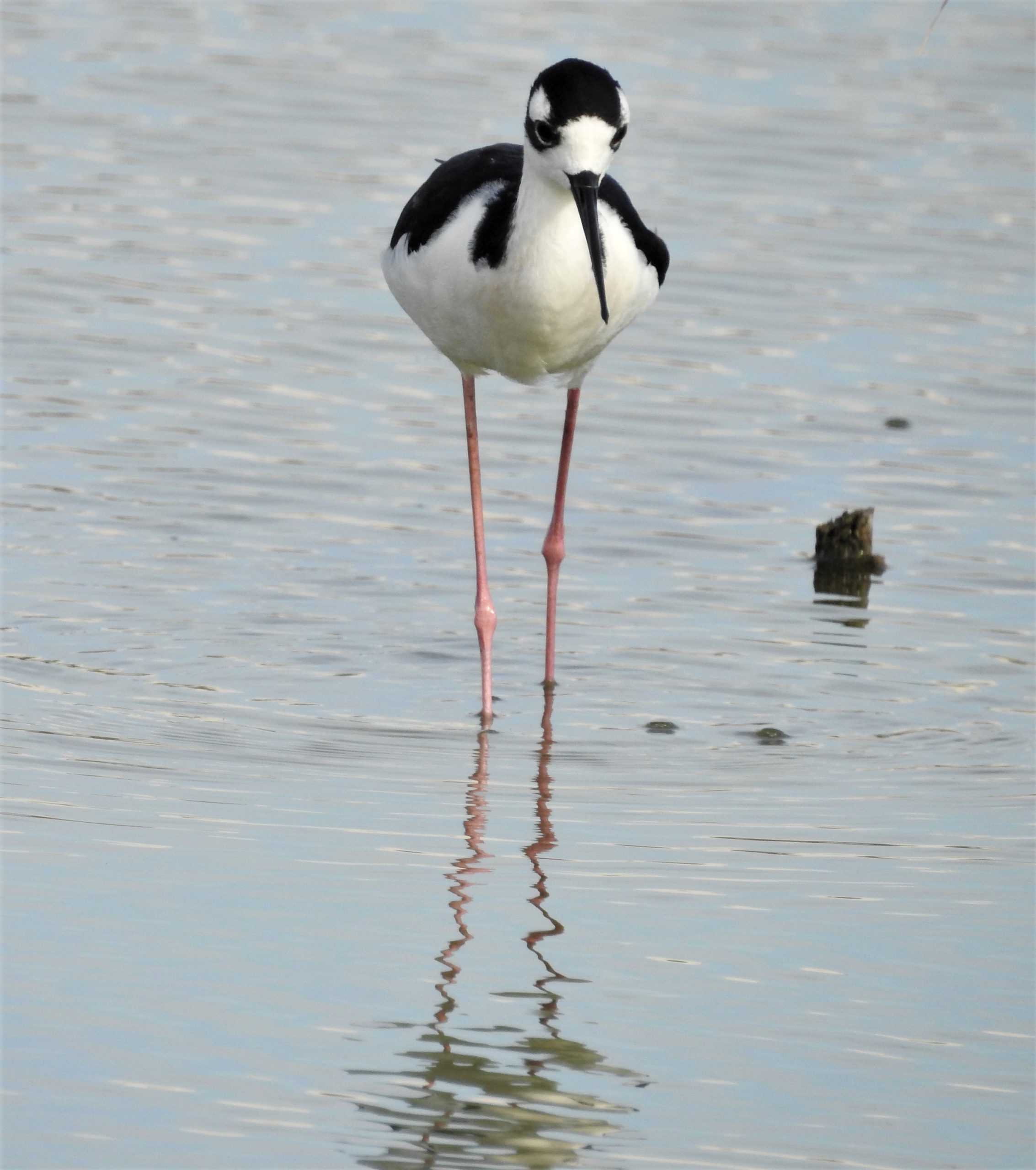
Stilts nest in loose groups, generally between April and August. After various courtship displays, a couple chooses and prepares a nesting site, preferably upon a slightly raised islet, scraping dirt with breasts and feet and tossing in items like grass, mud chips, feathers and bone fragments for lining. When water rises, stilts add supplemental vegetation. They usually lay four eggs.
The couple takes turns incubating eggs, and each stilt develops a brood patch—a bare spot on a bird’s belly that allows an increase of warm blood to flow near the skin’s surface, thus warming the eggs. Before taking its turn, a stilt often soaks its belly feathers to keep eggs sufficiently cool.
Hatchlings peep, click and whine as their shells crack. Within a day, downy, precocial (fairly independent) chicks, able to swim, if necessary, leave the nest, supervised by their parents for about a month before fledging. Vigilant, vociferous guardians, parents dive at predators or feign injuries to distract them. In their struggle to keep their own hatchlings corralled, parents may injure unrelated chicks or those of other species, sometimes to the point of pecking off their head skin.
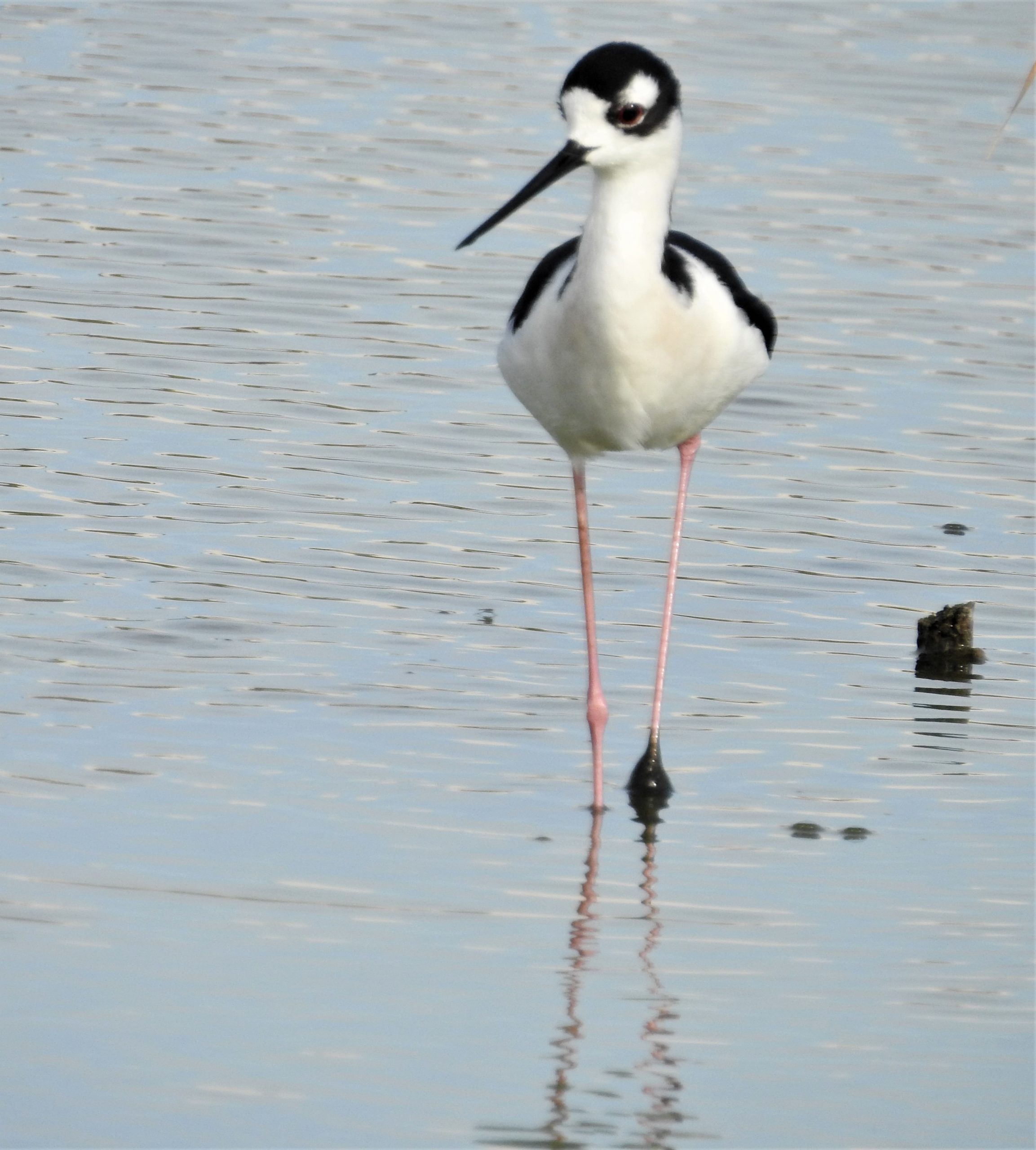
Black-necked stilts engage in a variety of calls to secure a mate, maintain contact and defend their young, the most commonly heard being a kek, kek, kek sound which may crescendo into a yap, yap, yap. Stilts engage in several displays, one of the most remarkable being the “popcorn display”, wherein adults alternatively jump up and down, flapping their wings and calling to dissuade predators. The following video shows stilts flocking in unison, along with other seabirds, to avoid a threatening northern harrier:
Among stilts’ defensive stances are the “upright posture”, in which the birds face their opponents, stretching their necks out vertically, with wings either extended or folded. In the “giraffe posture”, the birds stand as tall as possible, a threatening act that may lead to pecking. When stilts fight, they use an array of equipment—feet, bills and wings.
Opportunistic birds, stilts use varied waterways, including sewage and irrigation drainage ponds. This may ensure their survival, but it can expose them to hazardous pesticides and contaminants. Nevertheless, mainland black-necked stilts, although decreasing in numbers, are not endangered, though a subspecies in Hawaii is. And their range is expanding. Stilts are predated upon by various raptors, as well as snakes and mammals such as coyotes and foxes. Nevertheless, a black-necked stilt may survive up to 20 years.
